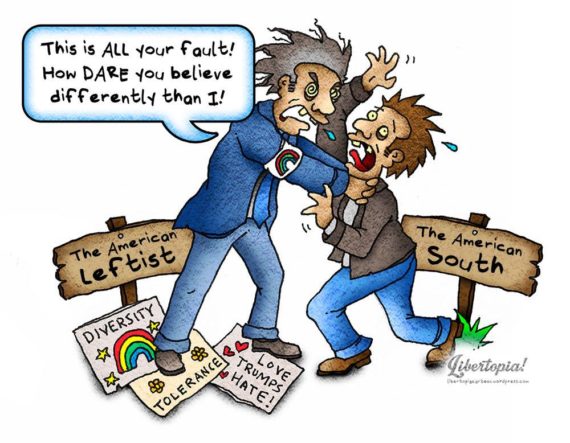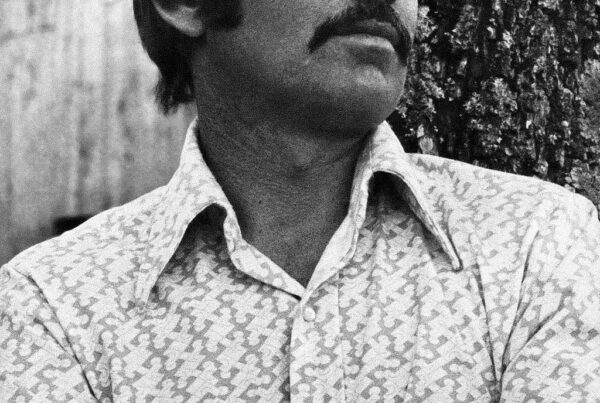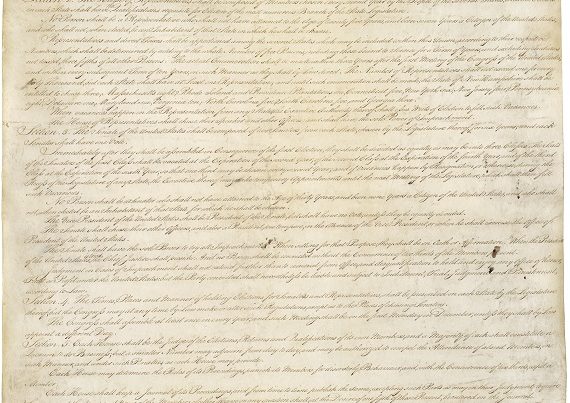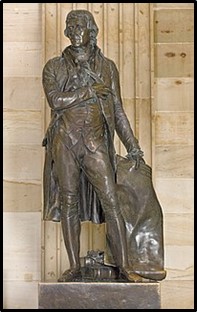
The so-called Civil Rights movement began in the mid-1950s with goals of ending segregation and discrimination. Over the decades it has evolved from “correcting” certain aspects of society, into a virtual restructure of society. What began as a movement became a revolution. Technological advances in communications made this revolution possible – a revolution similar to the Protestant Reformation.
It is doubtful that Martin Luther’s Protestant Reformation could have taken place before the invention of the printing press. Most people lend more credence to the written word than the spoken word. Also, printed pamphlets could be distributed en masse to the multitudes. This new form of communication not only made people more aware of the abuses of Church practices but also created passionate demands for reform. But the Reformation continued to grow and its accusations expanded until it eventually created a mob mentality that zealously vandalized priceless altarpieces and destroyed ancient religious artifacts and sacred works of art.
Before the advent of television, the Civil Rights revolution would not have been possible. Television broadcasts created a more powerful and intimate interaction with people than radio or newspapers. Perusing newspapers usually took an hour or so with morning coffee. Radio listening normally involved only music with occasional news items. But, as the 1960s began, most families had TV sets and television viewing became America’s primary pastime, several hours of each day was spent watching television..
With this new communication medium, news programs on the three New York City television networks spawned the Civil Rights revolution. The original mission was assuring minorities equal treatment under the law. But “mission creep” gradually converted equal treatment for minorities into a denigration of anything that could be tied to slavery.
As slavery had existed in America from early 17th century Colonial days until the late 19th century, expunging anything connected with it was an overly optimistic goal. Also, as slavery was legal during all that time, denigrating anyone involved in the institution meant judging previous generations by laws and standards that didn’t exist until later.
Before the Civil Rights revolution, the South was typically portrayed favorably, albeit somewhat caricatured. Hollywood was partial to films set in the deep South, and audiences enjoyed depictions of the region’s leisurely lifestyle; shady verandas, Mint Juleps, and Southern Belles.
When presidential candidate John F. Kennedy visited South Carolina, he was greeted by Governor Fritz Hollings, who presented him with a replica of a Confederate flag. At the time, this was viewed as simply a good-natured welcoming gesture reflecting Southern ambiance – It wasn’t until later that a racist connotation was assigned to all things Southern.
Although the 1960s Civil Rights legislation was described as “sweeping”, in reality, it had become “overreaching.” Still, it didn’t go far enough for the Left. And the Left was reluctant to lose the societal sanitizing momentum of the time. Thus television and other entertainment venues furtively perpetuated the legislation by demanding “rectification” of situations that were perfectly legal.
The rationale was that, although legal, and esteemed by some , if events could be perceived as hurtful to others, they must be eliminated. The primary target was Southern heritage. Today, with the media’s backing, monuments and memorials are being demolished; schools, buildings, and highways renamed, and books, films, and songs banned.
In retrospect we can see how the excessive regulations of the 1960s Civil Rights Legislation created an environment for cultural cleansing. These legislative Acts included the concept of “disparate impact” ; i.e., although practices are not intentionally unfair and apply equally to everyone, they are “discriminatory” if statistical outcomes are not uniform. The fact that there may be reasons other than discrimination causing irregular statistical distributions is rejected. The “disparate impact” concept is a Washington bureaucrat’s dream come true. Statistics are interpreted in the way that justifies whatever the Left is pursuing.
The Voting Rights Act of 1965 could be considered a precursor to attacks on Southern heritage. This act contained nationwide protections for voting rights but it also had “special provisions” that only applied to certain jurisdictions; primarily in Southern states. Because their voting requirements were deemed inequitable in 1965, these jurisdictions had to obtain Federal “preclearance” for any change in voting procedures. The law was for a specific period of time, but each time it was set to expire, it was extended for additional years. Federal preclearance is still required for some Southern jurisdictions decades after the inequitable 1965 voting disparities had been rectified.
As of 2011, Shelby County, Alabama, had been constrained by Federal preclearance dictates for roughly 50 years even though its voting disparities had been corrected long ago. The County filed suit against President Obama’s Attorney General, Eric Holder, demanding relief from Federal control of its voting procedures. Shelby County v. Holder was eventually appealed to the Supreme Court. As it was obvious that the 1965 voting inequities no longer existed, SCOTUS, in 2013, ruled in favor of Shelby County.
An indication of the polarization of our nation is the fact that four justices (appointees of Clinton and Obama) dissented: Ruth Bader Ginsburg, Sonia Sotomayor, Elena Kagan, and Stephen Breyer.
These dissenting justices admitted that voting restrictions were no longer a problem in the Alabama County, but they argued that without the constraints of the law, they could reoccur. This is reminiscent of the vindictive Congressional Reconstruction justification for military control of the defeated South.
To be readmitted to the Union, Presidents Lincoln and Johnson required only that Southern states reject secession, swear an oath of allegiance to the Union, and treat former slaves as freedmen. These lenient postwar Reconstruction conditions were rejected by the Radical Republicans who insisted that the defeated South must be occupied indefinitely by Union military forces. But, as there were no television networks in the late 1800s, Republicans couldn’t garner ongoing Northern support for a long-standing military occupation of the South.
Television’s depictions of past events are offensive to anyone who has engaged in at least a modicum of historical research, and especially persons who resided in the South during the Civil Rights era. Television portrayals are like Hollywood movie versions of famous novels; stripped of complexities and reduced to stereotyped artifices. The media’s take on American slavery downplays the North’s financial involvement, and places slavery’s evils solely on the South. As the public has been too intimidated to object, the frenetic eradication of Southern heritage has become almost ludicrous.
Thinking it was innocently informing potential customers when a business would be opened or closed in certain Southern states, Google casually listed places that might be closed on Robert E. Lee’s birthday. But mentioning Robert E. Lee’s birthday rather than Martin Luther King Day, set off such a firestorm of complaints that Google had to apologize. ESPN was forced to offer a formal apology for using the song “Dixie” in a tongue-in-cheek parody relating football rivalries to the Civil War.
When the Mississippi Department of Revenue announced that it would be closed on Martin Luther King Day, it tweeted that it would also be closed on the anniversary of Robert E. Lee’s birthday. Their acknowledgment of General Lee created a backlash and a petition demanding that Southern states discontinue honoring Robert E. Lee.
President Trump was excoriated for claiming “there is blame on both sides” for the riots in Charlottesville over the removal of a statue of General Robert E. Lee. But Trump’s opinion was also expressed by many reporters and eyewitnesses and corroborated by videos and photographs. By presenting only one side of the story, Leftist media has scripted Charlottesville into a hackneyed anti-Southern fable. In his critique of memorial removals, the president wondered ‘where will this end?’
The “feel-good” experience a mob gets when it demolishes a monument doesn’t last long so their vindictiveness must soon find another memorial to trash. Social justice warriors have stated that Confederate monument removals is just the first step. Of course, we know what those additional steps will be: removing monuments for Washington, Jefferson, and other early icons; eliminating holidays honoring these men, changing designations of counties, towns, and streets bearing their names, and deleting their images from coins and currency.
Like President Trump, we must all ask “Where will this end?”






